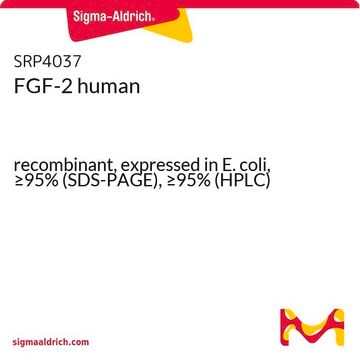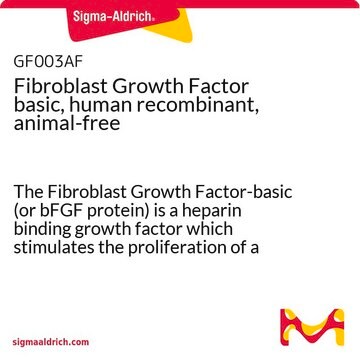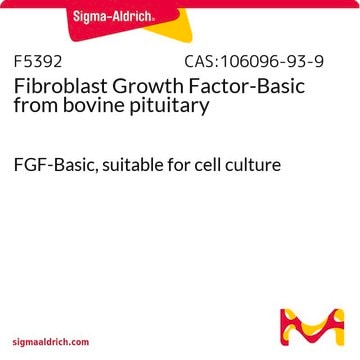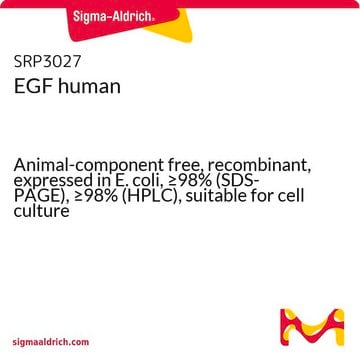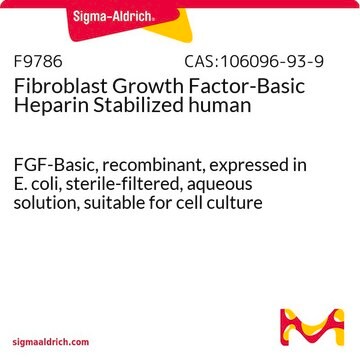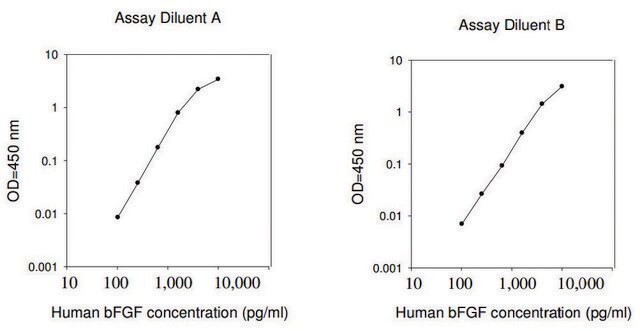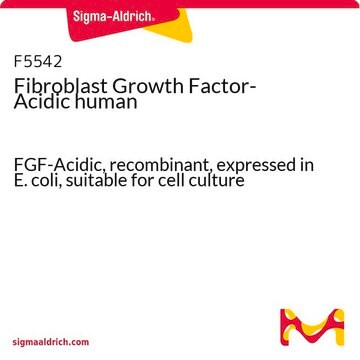F3685
Fibroblast Growth Factor-Basic, human
≥97% (SDS-PAGE), recombinant, expressed in E. coli, carrier free, suitable for cell culture
Synonym(s):
FGB-b, FGF-2, HBGF-2, HBGH-2, Prostatropin, bFGF
Select a Size
Select a Size
About This Item
Recommended Products
Product Name
Fibroblast Growth Factor-Basic, FGF-Basic, from human, recombinant, expressed in E. coli, carrier free
biological source
human
Quality Level
recombinant
expressed in E. coli
assay
≥97% (SDS-PAGE)
form
lyophilized powder
potency
<1 ng/mL Biological Activity EC50
mol wt
16.0 kDa
packaging
pkg of 4X25 μg
pkg of 25 μg
storage condition
avoid repeated freeze/thaw cycles
General description
Storage Class
10 - Combustible liquids
wgk_germany
WGK 1
flash_point_f
Not applicable
flash_point_c
Not applicable
Choose from one of the most recent versions:
Certificates of Analysis (COA)
Don't see the Right Version?
If you require a particular version, you can look up a specific certificate by the Lot or Batch number.
Already Own This Product?
Find documentation for the products that you have recently purchased in the Document Library.
Customers Also Viewed
Our team of scientists has experience in all areas of research including Life Science, Material Science, Chemical Synthesis, Chromatography, Analytical and many others.
Contact Technical Service

